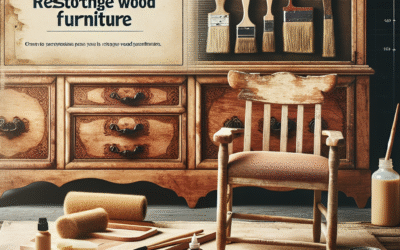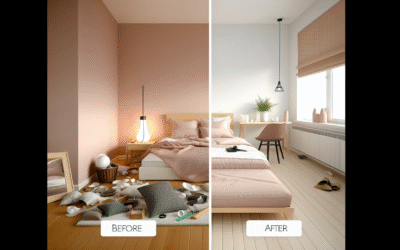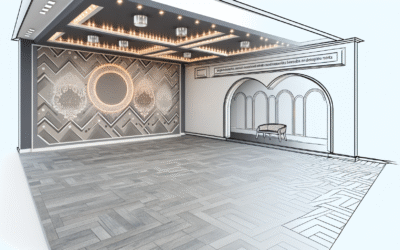
The Texture Revolution: Why Your Space Needs More Tactile Appeal
Feeling Is Believing: More Than Just Pretty Pictures
You know, we live in a world where everything feels so… visual, right? Scrolling through Instagram, Pinterest, or Houzz, we’re bombarded with perfectly curated images of stunning interiors. And don’t get me wrong, aesthetic appeal is super important. But honestly, I think we’ve gotten a little too caught up in how things *look* and perhaps forgotten how they *feel*. This, my friends, is where the texture revolution comes in. It’s about bringing back that tactile dimension to our living spaces, making them not just beautiful to behold, but also utterly delightful to experience.
Think about it: when you walk into a room, your eyes are certainly taking it all in. But what about your other senses? A truly inviting space doesn’t just show you things; it *offers* them. It invites you to touch, to linger, to get comfortable. That plush velvet cushion, the cool, smooth ceramic of a mug in your hand, the rough-hewn wood of a vintage console table – these aren’t just decorative elements. They’re invitations to engage with your environment on a deeper, more sensory level. This shift, from purely visual appreciation to a rich, multisensory experience, is really what we’re talking about when we discuss texture. It adds a whole other layer of comfort and personality, something a flat screen can never quite capture.
Why Our Homes Became So… Flat? A Little History Lesson (Sort Of)
For a while there, especially with the rise of minimalism and sleek, ultra-modern designs, everything seemed to flatten out. Clean lines, monochromatic palettes, smooth surfaces – these definitely have their place, and I appreciate the calm they can bring. But sometimes, it felt a bit cold, a bit sterile, didn’t it? It was like we were striving for perfection, for an unblemished aesthetic, and in doing so, we sometimes sacrificed a bit of warmth, a bit of that cozy, lived-in feeling.
Our homes, I argue, should be sanctuaries, places that feel incredibly personal and comforting. And while a visually stunning minimalist space can achieve that for some, for many of us, there’s a longing for something more. We want to run our hands over things. We want variety. We want our spaces to tell a story not just through color and shape, but through the very fabric of their being. This isn’t a critique of any particular style; rather, it’s an observation that perhaps we collectively overlooked something fundamental about human experience for a bit. We’re tactile creatures, after all, and our surroundings should reflect that.
The Science of Snuggles: How Texture Affects Your Brain (No, Really!)
Okay, so this might sound a bit academic, but bear with me. There’s some pretty cool science behind why we crave texture. Our brains are hardwired to process sensory information, and touch, or the somatosensory system, plays a massive role in how we perceive and interact with the world. Different textures can actually evoke different emotional responses. Think about it: a fluffy blanket often brings a sense of comfort and security; a rough, natural stone might feel grounded and strong.
When you incorporate a variety of textures into your home, you’re not just making it look good; you’re actively engaging your brain in a positive way. This sensory richness can reduce stress, enhance focus, and even improve your mood. Studies have shown that interacting with natural textures can have a calming effect. Psychology Today has some fascinating insights into the power of touch and nature, which really underscores this point. So, those carefully chosen textures aren’t just for show – they’re actually contributing to your well-being. It’s like a subconscious hug for your mind, if that makes sense.
Rough, Smooth, Soft, Hard: A Symphony of Surfaces
Let’s get down to brass tacks: what kind of textures are we talking about? The beauty of the texture revolution is that there are no hard and fast rules, just endless possibilities. It’s about creating contrast and harmony simultaneously.
Imagine a sleek, polished concrete floor – wonderfully modern, right? But then, picture it softened by a thick, shaggy wool rug. Or a crisp, smooth linen sofa juxtaposed with a chunky knit throw. That’s the magic! You’re creating visual interest, yes, but more importantly, you’re inviting interaction.
Here are some of my favorite textural pairings and individual stars:
* **The Comfort Kings:** Velvets, faux furs, sheepskins, thick wools. These are your go-to for instant coziness and a sense of luxury. They beg to be touched, to be snuggled into.
* **The Earthy Essentials:** Raw wood, woven rattan, natural stone, jute, sisal. These bring the outdoors in, grounding your space and adding an organic, artisanal feel. They often speak of craftsmanship and authenticity.
* **The Sleek Sophisticates:** Polished metals (brass, chrome), glass, marble, smooth ceramics. These add a sophisticated gleam, a touch of cool elegance. They reflect light beautifully and provide a crisp counterpoint to softer elements.
* **The Crisp and Clean:** Linen, cotton, percale. These are all about fresh, effortless style. They feel light, breathable, and bring a classic, understated charm.
Mixing these up, letting them play off one another, that’s where the real artistry happens. You want that soft cotton cushion next to the cool, smooth ceramic vase. It’s like a little tactile dance!
Where to Start? Small Touches, Big Impact
Feeling a bit overwhelmed? Don’t be! You don’t need a complete overhaul to join the texture revolution. Sometimes, the smallest shifts make the biggest statements.
Think about accessories. Swapping out a couple of throw pillows for ones with different fabrics – perhaps a chunky knit and a silky velvet – can instantly change the feel of your sofa. A new rug is another fantastic way to introduce a significant textural element. Maybe you’ve got a rather plain floor; a jute rug can provide incredible warmth and character.
Consider your window treatments too. Instead of plain blinds, what about some flowing linen drapes? They not only add softness but also diffuse light beautifully, creating a whole new ambience. Even something as simple as a potted plant with interesting foliage can add an organic texture and a touch of life. Seriously, fiddle leaf fig or a snake plant? They bring a fantastic sculptural quality that’s also textural.
And don’t forget those often-overlooked surfaces: tabletops, shelves, and walls. A textured wallpaper can completely transform a room, or even just an accent wall. Imagine a grasscloth wallpaper behind your bed – instant calm and organic interest! Or a beautifully aged wooden bowl on your coffee table; it just begs for a hand to trace its lines. It’s about being mindful of every surface and asking, “How does this feel? How *could* it feel?”
Tactile Tales: Telling Your Story Through Surfaces
Here’s what I find really fascinating about texture: it’s deeply personal. The textures you’re drawn to often reflect your personality, your memories, even your aspirations. That antique chest inherited from your grandmother, its wood smoothed by generations of touch – that’s more than just furniture; it’s a story. The soft, worn denim of your favorite throw – it speaks of countless cozy evenings.
When you consciously choose textures, you’re not just decorating; you’re curating an environment that truly resonates with you. You’re building a narrative. This is why a mass-produced, “perfectly matched” furniture set often feels a bit soulless, while a collection of mismatched pieces, each with its own story and distinctive feel, feels incredibly rich and authentic. It’s about building layers, just like a great painting or a compelling book. Each texture adds a new chapter to your home’s story. It’s truly a form of self-expression, isn’t it?
Beyond the Living Room: Texture in Unexpected Places
We often focus on living rooms and bedrooms when discussing decor, but don’t limit yourself! Texture can elevate every corner of your home.
Ever thought about your kitchen towels? Switching from plain cotton to a waffle weave or textured linen can make even chores feel a little nicer. And what about glassware? Those sleek, modern tumblers are fine, but a set of vintage glasses with etched patterns or a more substantial, weighty feel? They just make a drink taste better, somehow. It’s the small luxuries, the subtle shifts, that truly make a difference.
In the bathroom, think about plush bath mats, super soft towels (bamboo cotton, anyone?), and perhaps some decorative baskets made of woven natural fibers to hold toiletries. These small details transform a functional space into a spa-like retreat. Even in home offices, a textured desk organizer or a soft mouse pad can break up the monotony of screens and plastic, making the workspace feel more inviting and less strictly utilitarian. It’s all about infusing that sensory goodness everywhere!
The Sustainable Side of Softness: Choosing Natural Textures
Here’s a little tangent that’s incredibly relevant: leaning into natural textures often goes hand-in-hand with making more sustainable choices. Materials like organic cotton, linen, wool, jute, and responsibly sourced wood not only feel wonderful but they’re also often better for the planet. They tend to be more durable, too, meaning you’re buying less and enjoying your pieces for longer. It’s a win-win, truly.
When you buy things that feel good, that have a natural “hand,” you tend to cherish them more. You’re more likely to repair them, to keep them, because there’s an inherent value in their craftsmanship and a connection to the material. So, embracing texture isn’t just about aesthetics; it’s also about a mindful approach to consumption. It’s about investing in pieces that endure, both stylistically and physically.
Don’t Be Afraid to Mix It Up: A Quick Caveat (and Encouragement!)
Now, a word of caution, but really, it’s more of an encouraging nudge: sometimes people worry that mixing too many textures will make a space look chaotic. And maybe, if done without any thought, it *could*. But the trick is to find common ground. Maybe it’s a consistent color palette, or a unifying design style, or simply a balanced distribution of soft and hard elements.
The key is experimentation! Don’t be afraid to try different combinations. Bring home a throw pillow, see how it feels against your sofa. Hold up a patterned curtain sample. What’s the worst that can happen? You decide it doesn’t work, and you try something else. That’s the beauty of personalizing your space; it’s an ongoing, evolving process. Sometimes things just click in ways you didn’t expect, creating a wonderfully dynamic synergy.
Remember, your home should feel like *you*. And if *you* are a wonderfully complex, multifaceted human being, then your home should reflect that same beautiful complexity. Embrace the linen, the velvet, the wood, the ceramic. Invite the tactile. Join the texture revolution. Your senses will thank you.
Frequently Asked Questions About Texture in Home Decor
Disclaimer
The information provided in this article is for general informational purposes only and does not constitute professional advice. While we strive to provide accurate and up-to-date content, home decor preferences and impacts can vary widely. We recommend consulting with a qualified interior designer or relevant expert for specific design applications or decisions concerning your personal space. Links to external websites are provided for convenience and do not imply endorsement or responsibility for their content.
Categories
- Accent Walls & Ceilings (61)
- Art Curation & Gallery (62)
- Bedding Style Trends (68)
- Bedroom Makeover (81)
- Bohemian & Eclectic Styles (58)
- DIY & Budget-Friendly Decor (64)
- Eco-Friendly Design (62)
- Furniture Care (71)
- Home Decor & Design Ideas (162)
- Home Wellness Spaces (59)
- Integrated Outdoor Living (67)
- Japandi Style (61)
- Kids and Nursery Decor (59)
- Living Room Decor (79)
- Mix & Match Techniques (73)
- Modern & Contemporary Design (66)
- Rug Sizing & Placement (73)
- Scandinavian Design Inspiration (20)
- Seasonal Home Decor (79)
- Small Space Solutions (73)
- Wall Art & Painting Tips (77)
Recent Comments
Archives
Product Gallery
-
Large Area Green Rugs for Bedroom Nordic Living Room Decoration Shaped Carpet Irregular Plush Lounge Rug Home Thick Washable Mat
Rated 5.00 out of 5$36.00 – $225.00Price range: $36.00 through $225.00 -
Nordic Style Rugs for Bedroom Morandi Living Room Decoration Carpet Large Area Geometry Lounge Rug Home Cloakroom Non-slip Mat
Rated 5.00 out of 5$26.00 – $387.00Price range: $26.00 through $387.00 -
Irregular Shapes Living Room Decoration Carpet Modern Style Rugs for Bedroom Home Thicken Plush Rug Fluffy Soft Lounge Floor Mat
Rated 4.83 out of 5$37.00 – $226.00Price range: $37.00 through $226.00














